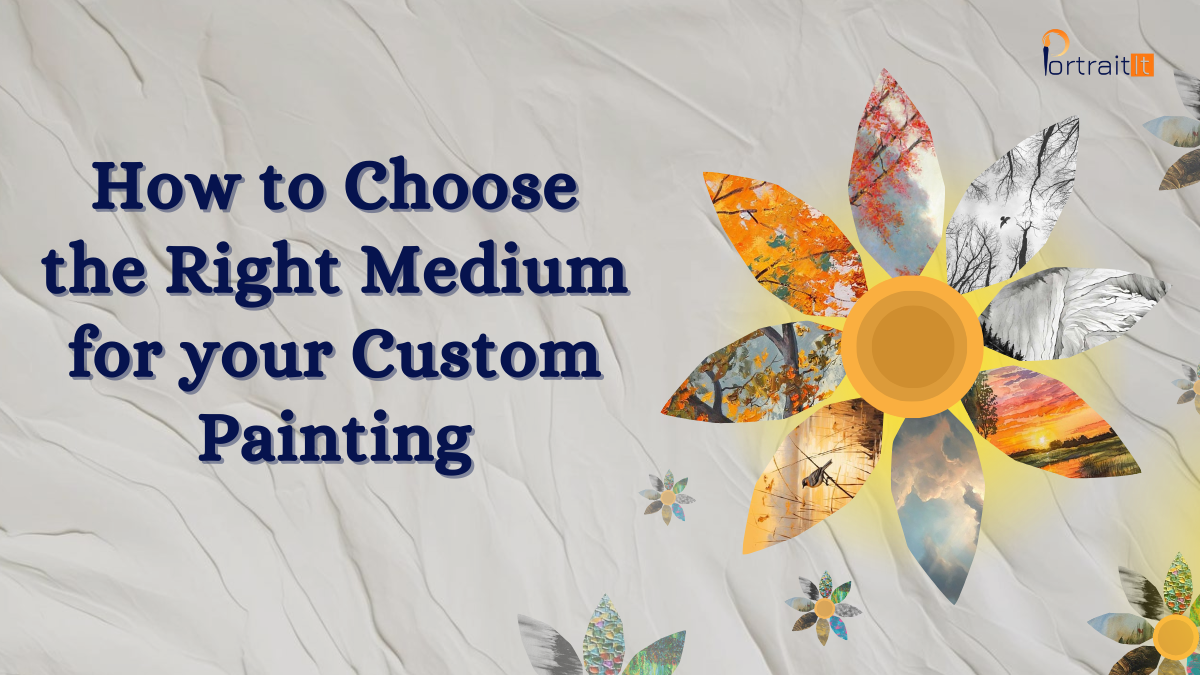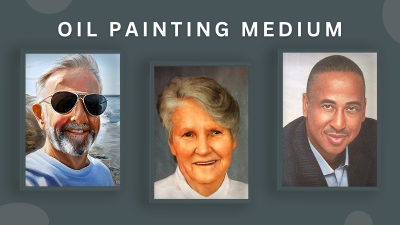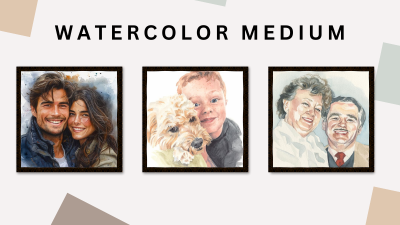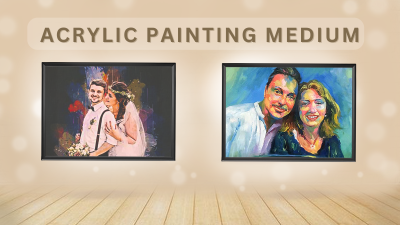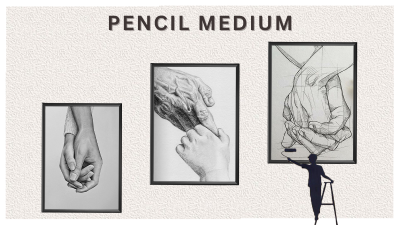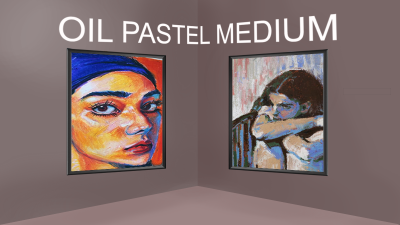In the world of art, a custom painting is a unique and original work created by an artist for a specific client or project.
It’s a one-of-a-kind piece that reflects the client’s personal style, preferences, and vision.
Whether it’s a portrait, landscape, abstract, or still life, a custom painting is a bespoke creation that tells a story, evokes emotions, and adds a touch of personality to a room.
When it comes to creating a custom painting, the choice of medium is crucial. The medium is the material or substance used to create the artwork, and it can greatly impact the final result.
Some of the popular mediums are oil, watercolour, acrylic and canvas, wood, paper are also the mediums upon where the paintings are made.
Choosing the perfect medium for your custom painting is a crucial decision that can truly make your artwork come alive. The medium you select sets the tone, defines the style, and influences the overall impact of your masterpiece.
In this blog post, we’ll explore the key factors to consider when deciding on the ideal medium for your artistic expression.
Let’s dive into the world of colors, textures, and creativity to help you make the best choice for your custom painting journey.
Understanding the Types of Medium
Oil Paint
Oil paint is a classic choice, known for its rich colors and versatility.
Characteristics of Oil Paint
- Rich Colors: Offers deep, vibrant colors.
- Blendability: Slow drying time allows for smooth blending and color transitions.
- Texture: Can be applied in thick layers, adding depth and dimension.
- Versatility and Durability: Works well on various surfaces like canvas, wood, and paper, with colors that stay vivid over time.
Pros of Oil Paint
- Extended Work Time: Slow drying allows for intricate details and blending.
- Versatile Techniques: From thin glazes to thick impasto, oil paint offers creative freedom.
- Rich Texture: The thick consistency allows for layered, textured effects.
Cons of Oil Paint
- Drying Time: Takes longer to dry, which can be a disadvantage for quick projects.
- Toxicity: Some solvents can be harmful without proper ventilation.
- High Maintenance: Requires more effort to clean brushes and palettes.
Watercolor
Watercolor is known for its translucent and fluid qualities, creating a soft, luminous effect.
Characteristics of Watercolor
- Transparency: Provides delicate washes of color.
- Fluidity: Easy to create quick, intuitive changes.
- Portability: Easy to carry and clean up.
Pros of Watercolor
- Transparency: Allows for beautiful, light washes and soft effects.
- Flexibility: Ideal for spontaneous and quick work.
- Easy Cleanup: Lightweight and minimal maintenance required.
Cons of Watercolor
- Unpredictability: Achieving specific colors or textures can be challenging.
- Layering Difficulty: Thin layers are harder to control.
- Limited Correctability: Hard to make changes once applied.
Acrylic
Acrylic paint is fast-drying and versatile, suitable for various styles and effects.
Characteristics of Acrylic
- Fast-Drying: Dries quickly, allowing for fast layering.
- Vibrant Colors: Maintains color intensity after drying.
- Durability: Resistant to fading and cracking.
Pros of Acrylic
- Quick Drying: Ideal for artists who prefer faster turnaround.
- Bright Colors: Retains vibrancy over time.
- Long-Lasting: Highly durable and resistant to damage.
Cons of Acrylic
- Permanence: Difficult to alter once dry.
- Limited Blending: Colors are harder to blend after drying.
- Texture Issues: Can build up heavily if not properly thinned.
Pencil
Pencil is a dry medium that’s excellent for sketches and detailed work.
Characteristics of Pencil
- Erasability: Marks can be corrected.
- Versatility: Suitable for both detailed shading and expressive gestures.
- Portability: Lightweight and easy to carry.
Pros of Pencil
- Convenient: Perfect for on-the-go sketches.
- Expressive: Allows a wide range of marks and textures.
- Flexible: Easily adaptable for various techniques.
Cons of Pencil
- Limited Contrast: Harder to achieve high contrast.
- Smudging: Graphite is prone to smudging.
- Fragile: Pencil lines can be easily erased or damaged.
Oil Pastel
Oil Pastels are wax-based with a buttery texture, ideal for bold, vibrant art.
Characteristics of Oil Pastels
- Bold Colors: Provides rich, vibrant hues.
- Expressive: Great for creating bold textures and layered colors.
Pros of Oil Pastels
- Vibrant Effects: Captures rich colors easily.
- Expressive: Suits bold, textured work.
- Layering Potential: Allows for varied color blending.
Cons of Oil Pastels
- Difficult Blending: Harder to merge colors.
- Fragility: Can break or crumble easily.
- Permanent Marks: Hard to correct once applied.
Factors to Consider When Choosing a Painting Medium
- Canvas: Traditional, versatile, and sturdy, suitable for oil, acrylic, and mixed media.
- Paper: Best for watercolor and pencil; offers a unique texture and lightweight feel.
- Wood: Adds a rustic, textured quality, excellent for oil and acrylics.
- Board: Strong, flat surface ideal for both acrylic and oil.
- Fabric: Unique and tactile, adding an interesting layer to the artwork.
Choosing the Right Combination of Subject Matter and Medium
- Complementary Choices: Select a subject and medium that enhance each other, like a vibrant abstract on canvas.
- Contrasting Styles: Mix delicate watercolors with detailed portraits on paper.
- Experimentation: Try mixed media on unconventional surfaces like wood.
- Uniqueness: Stand out with unique materials, like painting on fabric or textured wood.
- Emotional Connection: Choose a medium that resonates emotionally, making the art process meaningful.
Conclusion
Selecting the right medium for your custom painting is an essential part of the creative journey.
Remember to consider factors such as durability and the intended display method, as well as any emotional connection you have to the medium or subject.
By thoughtfully choosing the ideal medium, you can ensure your artwork not only reflects your personal style but also stands the test of time as a unique creation.

